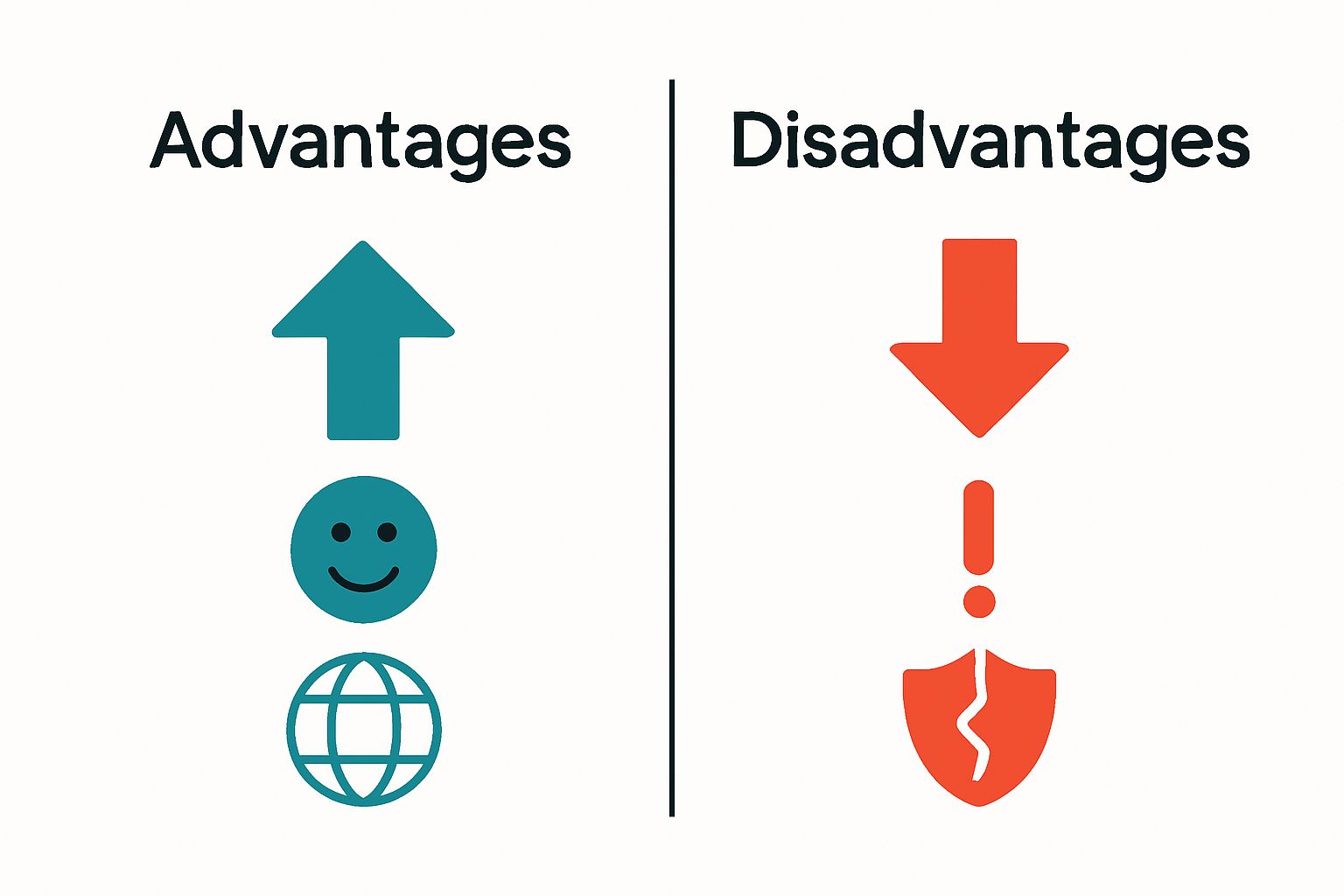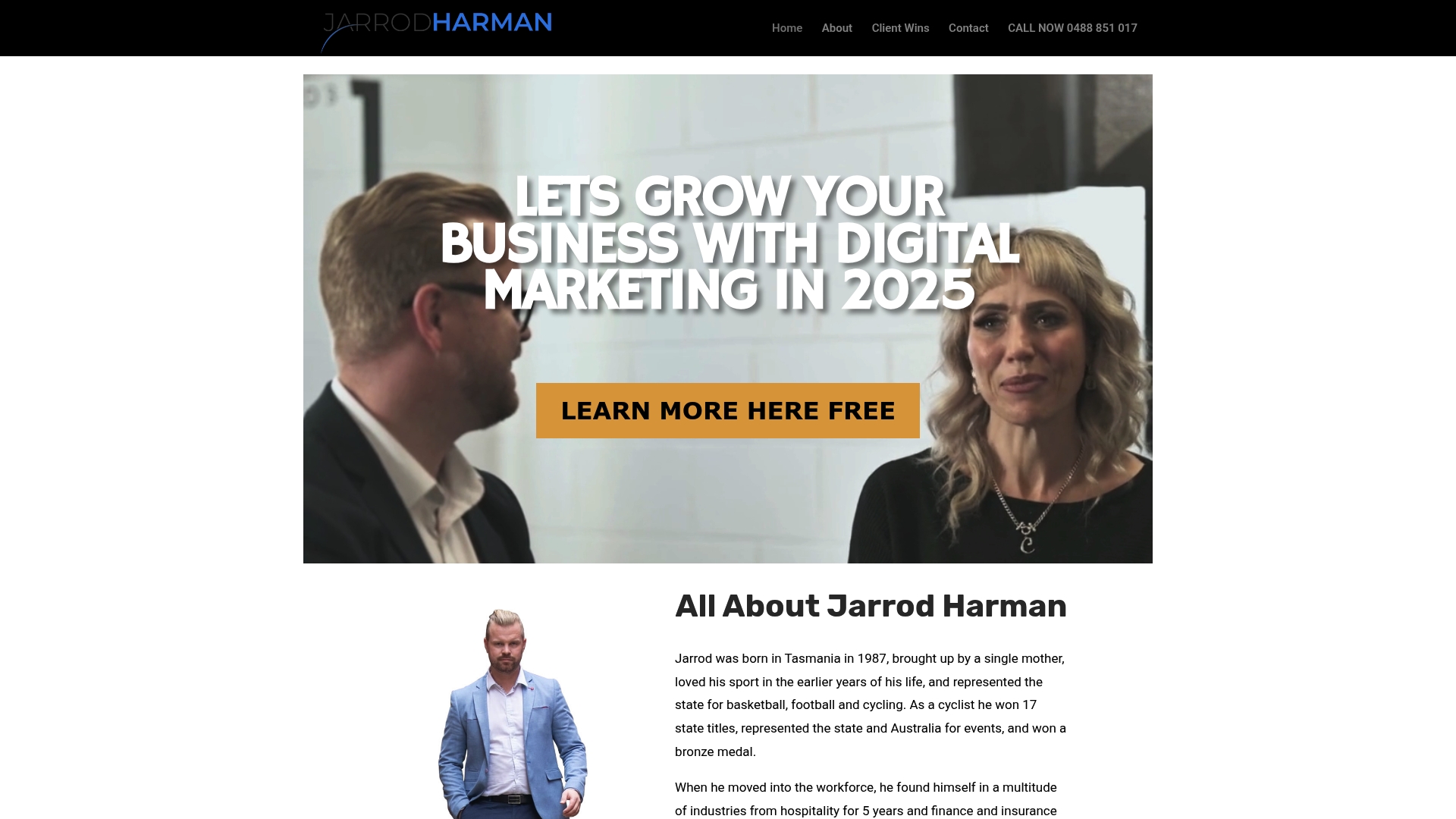Social media marketing has completely changed how Aussie businesses connect with people and build their brands. Now, almost 80 percent of Australians use social media every day and businesses are taking notice. But what might surprise you is that it is not just about posting pretty photos or funny videos. The real power comes from using smart strategies and data-driven insights to cut through the noise and create real results.
Table of Contents
- What Is Social Media Marketing And Its Role?
- The Importance Of Social Media In Business Growth
- Key Advantages Of Social Media Marketing
- Understanding The Disadvantages And Risks
- Balancing Benefits And Drawbacks In Strategy
Quick Summary
| Takeaway | Explanation |
|---|---|
| Social media marketing connects businesses and audiences | It facilitates direct interaction through tailored content and targeted advertising, enhancing brand engagement and awareness. |
| Real-time feedback enhances customer relationships | Businesses can interact dynamically, allowing for immediate responses to customer inquiries and concerns, fostering loyalty and trust. |
| Data-driven strategies maximise marketing effectiveness | By analysing audience behaviours and preferences, companies can create personalised campaigns that yield higher engagement rates and conversions. |
| Reputation management is crucial in social media | Negative feedback can spread quickly, making it essential for brands to monitor and manage their online presence proactively. |
| Implementing risk management frameworks protects brand integrity | A comprehensive approach to governance and cybersecurity can minimise vulnerabilities and strengthen trust with customers. |
What is Social Media Marketing and Its Role?
Social media marketing is a sophisticated digital strategy that leverages online platforms to connect businesses with their target audiences, build brand awareness, and drive strategic engagement. At its core, social media marketing transforms traditional communication channels by enabling businesses to interact directly with potential customers through compelling content and targeted advertising.
The Strategic Foundation of Social Media Marketing
Understanding social media marketing requires recognising its multifaceted approach to digital communication. Our comprehensive guide on social media marketing strategies reveals that this practice goes beyond simple posting. It involves creating tailored content, analysing audience behaviour, and developing data-driven campaigns that resonate with specific demographic segments.
Key strategic components include:
- Content creation that speaks directly to audience interests
- Targeted advertising using platform-specific algorithms
- Engagement tracking and performance measurement
- Building community and brand loyalty through consistent interaction
Technological Ecosystem and Marketing Dynamics
Modern social media marketing operates within a complex technological ecosystem powered by artificial intelligence and advanced analytics. According to Hootsuite’s Digital Trends Report, businesses can now leverage machine learning algorithms to predict consumer behaviour, personalise marketing messages, and optimise advertising spend with unprecedented precision.
The role of social media marketing extends far beyond simple promotional activities. It serves as a critical strategic interface between businesses and consumers, enabling real-time feedback, brand storytelling, and dynamic relationship building. By integrating SEO strategies, content marketing, and social platform-specific techniques, businesses can create comprehensive digital marketing approaches that transcend traditional advertising limitations.
Ultimately, social media marketing represents a powerful convergence of technology, psychology, and strategic communication, offering businesses unprecedented opportunities to connect, engage, and convert their target audiences in the digital marketplace.
The Importance of Social Media in Business Growth
Social media has revolutionised how businesses connect, communicate, and compete in the digital marketplace. Our comprehensive guide on understanding social media growth reveals that strategic social media engagement is no longer optional but a critical component of sustainable business development.
Strategic Business Expansion Through Digital Platforms
Businesses leveraging social media platforms effectively can unlock unprecedented opportunities for market penetration and customer acquisition. According to research from Deloitte, companies actively using social media experience significant advantages in brand visibility, customer engagement, and revenue generation.
Key strategic advantages include:
- Direct access to global markets
- Real-time customer feedback mechanisms
- Cost-effective marketing and advertising
- Enhanced brand credibility and trust
- Precise audience targeting capabilities
Technological Transformation and Customer Relationship Management
Modern social media platforms function as sophisticated ecosystems that enable businesses to transform traditional customer relationship management. Artificial intelligence and advanced analytics now provide unprecedented insights into consumer behaviour, preferences, and purchasing patterns.
By integrating social media strategies, businesses can develop personalised marketing approaches that resonate deeply with target demographics. This approach goes beyond conventional advertising, creating meaningful connections that drive long-term customer loyalty and sustainable business growth.
The integration of social media into business strategies represents a fundamental shift in how organisations communicate, market, and understand their customers. It enables real-time interaction, immediate feedback loops, and dynamic brand storytelling that traditional marketing channels cannot match.
Key Advantages of Social Media Marketing
Social media marketing offers businesses transformative strategies for digital engagement, brand building, and revenue generation. Our comprehensive guide on understanding the advantages of social marketing highlights the multifaceted benefits that extend far beyond traditional advertising approaches.
Targeted Audience Reach and Engagement
Modern social media platforms provide unprecedented precision in audience targeting and interaction. According to Sprout Social’s Marketing Research, businesses can now segment audiences with remarkable granularity, enabling hyper-personalised communication strategies.
Key targeting advantages include:
- Demographic precision targeting
- Behavioural pattern analysis
- Geographic location segmentation
- Interest-based audience selection
- Real-time engagement metrics
Cost-Effective Marketing and Brand Development
Social media marketing represents a significantly more economical approach compared to traditional advertising channels. Small businesses and enterprises alike can leverage these platforms to develop brand awareness, generate leads, and drive conversions with minimal financial investment.
The scalability of social media marketing allows businesses to:
- Implement flexible budgeting strategies
- Test multiple marketing approaches simultaneously
- Track return on investment with unprecedented accuracy
- Adjust campaigns in real-time based on performance metrics
By integrating sophisticated AI-driven analytics and machine learning algorithms, businesses can continuously refine their marketing strategies, ensuring maximum efficiency and effectiveness in their digital communication efforts.
To help clarify the core benefits and drawbacks of social media marketing discussed in the article, the following table gives a side-by-side comparison for quick reference.
| Aspect | Advantages | Disadvantages |
|---|---|---|
| Audience Reach & Engagement | Direct, targeted access to audiences; real-time engagement; global market penetration | Negative feedback is highly visible; difficult to control narrative in a crisis |
| Cost Effectiveness | Lower marketing costs versus traditional advertising; flexible budgeting | Requires ongoing investment in resources and technology |
| Feedback & Analytics | Real-time feedback; actionable insights through analytics | Immediate public visibility for complaints; data can be overwhelming to interpret |
| Brand Building | Builds credibility and trust; enhances brand awareness | Reputation can be rapidly damaged by viral criticism or misinformation |
| Technological Integration | Advanced AI and analytics for precise targeting | Greater exposure to cybersecurity and data privacy risks |
| Risk Management Requirements | Enables proactive crisis planning if managed well | Businesses must invest in governance, protocols, and staff training to mitigate risks |
 This dynamic approach transforms social media from a simple promotional tool into a comprehensive strategic platform for sustainable business growth.
This dynamic approach transforms social media from a simple promotional tool into a comprehensive strategic platform for sustainable business growth.
Understanding the Disadvantages and Risks
While social media marketing offers tremendous opportunities, businesses must critically evaluate potential drawbacks and strategic challenges. Our comprehensive overview of social media marketing risks provides essential insights into navigating the complex digital landscape.
Reputation Management and Brand Vulnerability
Social media platforms create unprecedented transparency, which simultaneously presents significant reputation management challenges. According to research from Cybersecurity Ventures, businesses face substantial risks from negative public interactions, viral criticism, and potential brand damage.
Key reputation risks include:
- Immediate public visibility of customer complaints
- Potential for misinterpreted corporate communications
- Rapid spread of negative feedback or misinformation
- Increased vulnerability to online trolling and cyberbullying
- Difficulty in controlling narrative during crisis management
Cybersecurity and Data Privacy Challenges
The interconnected nature of social media platforms introduces complex cybersecurity and data privacy concerns. Businesses must develop robust strategies to protect sensitive information and maintain customer trust.
Significant cybersecurity challenges encompass:
- Potential data breaches and information leaks
- Sophisticated phishing and social engineering attacks
- Vulnerability to competitor intelligence gathering
- Risks associated with employee social media usage
- Complex regulatory compliance requirements
Navigating these risks requires a proactive, comprehensive approach that balances the immense potential of social media marketing with strategic risk mitigation. Businesses must develop sophisticated digital governance frameworks, implement rigorous security protocols, and maintain ongoing training and awareness programs to effectively manage the evolving digital landscape.
Balancing Benefits and Drawbacks in Strategy
Effective social media marketing demands a nuanced approach that strategically integrates opportunities while mitigating inherent risks. Our strategic planning guide for social media marketing provides comprehensive insights into developing resilient digital communication strategies.
Strategic Risk Management Framework
Businesses must develop sophisticated risk management protocols that proactively address potential vulnerabilities. According to comprehensive research on digital communication strategies, successful organisations implement multi-layered approaches to navigate complex digital environments.
Key strategic considerations include:
- Developing comprehensive social media governance policies
- Creating clear employee communication guidelines
- Implementing robust monitoring and response mechanisms
- Establishing rapid crisis intervention protocols
- Continuously updating security and privacy frameworks
The following table outlines key components of a strategic risk management framework for social media marketing, as described in the article.
| Component | Purpose | Example Action |
|---|---|---|
| Governance Policies | Establish clear rules and protocols for online behaviour | Develop a social media use policy |
| Employee Guidelines | Direct staff on appropriate, secure online interactions | Provide do’s and don’ts for posting |
| Monitoring & Response Mechanisms | Detect and address issues promptly | Set up real-time alerts |
| Crisis Intervention Protocols | Respond rapidly during reputational threats | Create step-by-step crisis playbooks |
| Security & Privacy Frameworks | Protect information and maintain customer trust | Regularly review cybersecurity policies |
| Training & Awareness Programs | Ensure staff stay informed about changing risks | Schedule cybersecurity awareness sessions |
Technological and Human Resource Integration
Balancing social media marketing requires a holistic approach that combines technological solutions with strategic human resource management. Organisations must invest in continuous training, develop adaptive communication strategies, and leverage advanced analytics to maintain a competitive digital presence.
Critical integration strategies involve:
- Regular cybersecurity awareness training
- Implementing advanced social media management tools
- Developing cross-functional digital communication teams
- Creating agile response mechanisms
- Establishing transparent reporting and accountability structures
By adopting a comprehensive and proactive approach, businesses can transform potential risks into strategic opportunities. This requires ongoing commitment to learning, technological adaptation, and maintaining a flexible yet structured digital communication ecosystem that prioritises both innovation and organisational resilience.

Transform Social Media Challenges Into Business Breakthroughs
Are you feeling overwhelmed by the complexities and risks of social media marketing while chasing lasting results for your business? Many business owners struggle with reputation management, rapidly evolving digital strategies, and the pressure to achieve measurable growth online. By recognising the balance between the advantages and disadvantages of social media marketing, you can turn uncertainty into opportunity. We invite you to explore more insights into this topic on our Uncategorized Archives page, where we break down proven solutions and real-world case studies for ambitious brands like yours.

Now is your chance to join forces with Business Warriors, a leading digital marketing agency renowned for the “Marketing Vortex” method. We offer tailored support for service-based businesses ready to advance with targeted, scalable systems for lead generation and growth. Visit https://jarrodharman.com to discover how you can secure a sustainable marketing advantage today. Take action now and let us help you build a winning strategy for your business future.
Frequently Asked Questions
What are the main advantages of social media marketing?
Social media marketing offers targeted audience reach, cost-effective advertising, and enhanced brand visibility. To maximise these benefits, create tailored content based on audience analysis and consistently engage with your followers to drive conversions.
How can I measure the effectiveness of my social media marketing campaigns?
You can evaluate the effectiveness by tracking engagement metrics such as likes, shares, and comments, along with website traffic and conversion rates. Set specific goals for each campaign and review performance data weekly to adapt your strategies as needed.
What are the potential disadvantages of using social media for marketing?
The main disadvantages include reputation management risks and cybersecurity challenges. To mitigate these issues, develop a robust social media governance policy and conduct regular cybersecurity training for your team to protect your brand and customer data.
How do I balance the advantages and disadvantages of social media marketing?
To balance the benefits and drawbacks, implement a risk management framework that addresses vulnerabilities while leveraging positive opportunities. Regularly review your strategies and adjust your approach every 30-60 days based on performance feedback and industry changes.
What steps should I take to develop a comprehensive social media marketing strategy?
Start by defining your target audience and their preferences, then create a content calendar that aligns with your business goals. Review your strategy quarterly to ensure it remains effective and reactive to audience feedback and emerging trends.
Recommended
- Understanding the Advantages of Social Marketing – Jarrod Harman
- Understanding the Advantages of Social Media Marketing Over Traditional Marketing – Jarrod Harman
- 7 Types of Social Media Marketing Strategies You Need – Jarrod Harman
- Understanding the Role of Social Media in Modern Business – Jarrod Harman
- What is Digital Marketing? Understanding Its Importance


